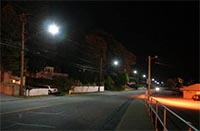Lighting design can reduce energy use by ensuring that each area of a space is lighted appropriately. Architectural design can maximize the use of daylighting. Below are some of the design-related completed projects and ongoing programs at the LRC.
Lighting for Health and Energy Savings: Schools
Lighting in K-12 classrooms should provide circadian stimulus to students (who tend to favor later bed and wake times than the average adult) to promote entrainment to the natural 24-hour light-dark cycle. Doing so can thereby improve sleep quality, psychological well-being, and possibly scholastic performance of students. However, providing circadian-effective lighting may have the unintended consequence of increasing energy use in classroom applications. This short guidance document is intended to help lighting specifiers design lighting for K-12 classrooms that can deliver high levels of circadian stimulus while avoiding increased energy use. This project was sponsored by the LRC’s Lighting Energy Alliance and Light & Health Alliance.
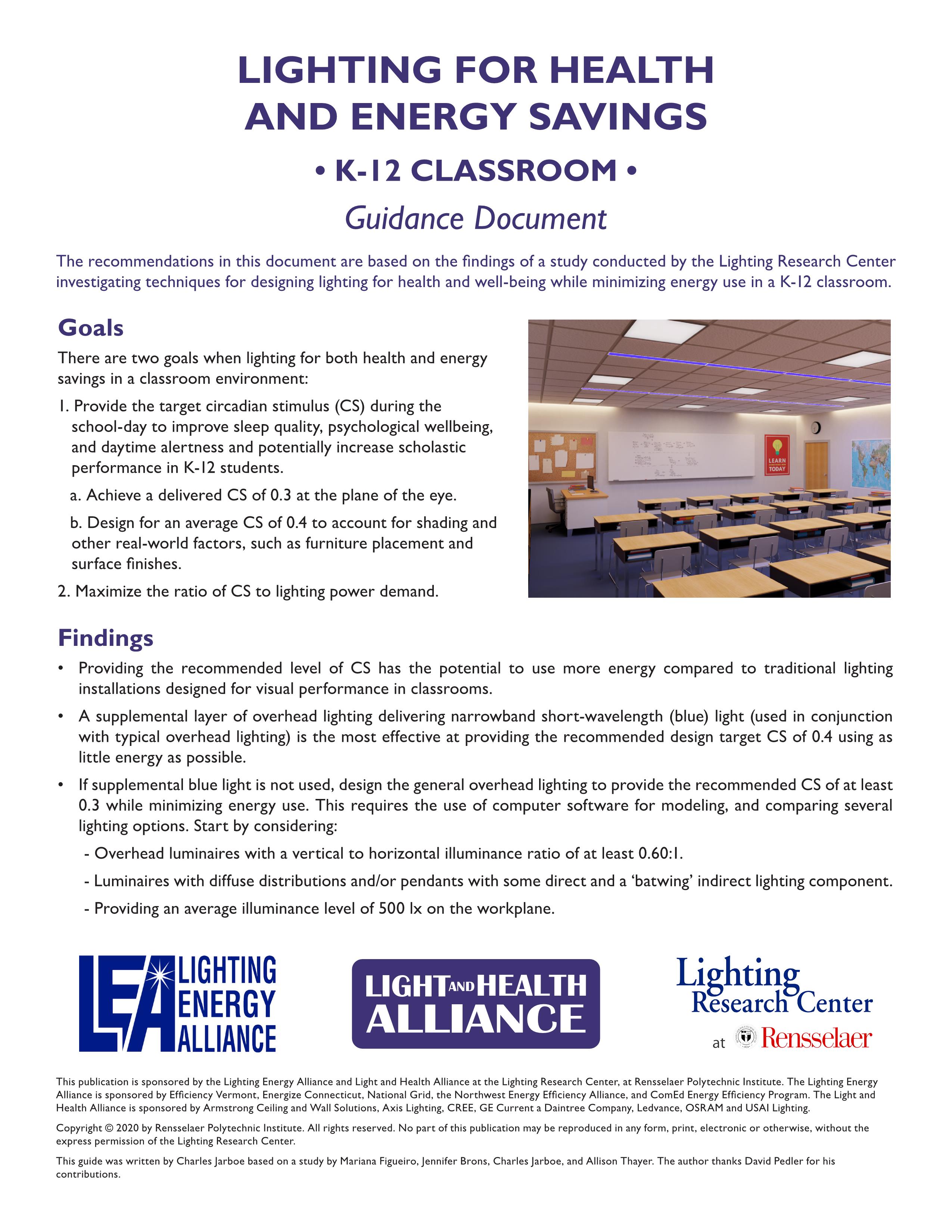
Lighting for Health and Energy Savings: Healthcare
The lighting in a hospital patient room serves numerous functions, one of which should be providing a robust 24-hour light-dark pattern to promote circadian entrainment. This can improve sleep quality, psychological health, and recovery of patients undergoing treatment. Unfortunately, providing lighting with such non-visual impacts has the potential to increase energy use as well as discomfort glare compared to general patient room lighting. This short guidance document is intended to help lighting specifiers design lighting for hospital patient rooms that will be circadian-effective and visually comfortable while avoiding increased energy use. This project was sponsored by the LRC’s Lighting Energy Alliance and Light & Health Alliance.
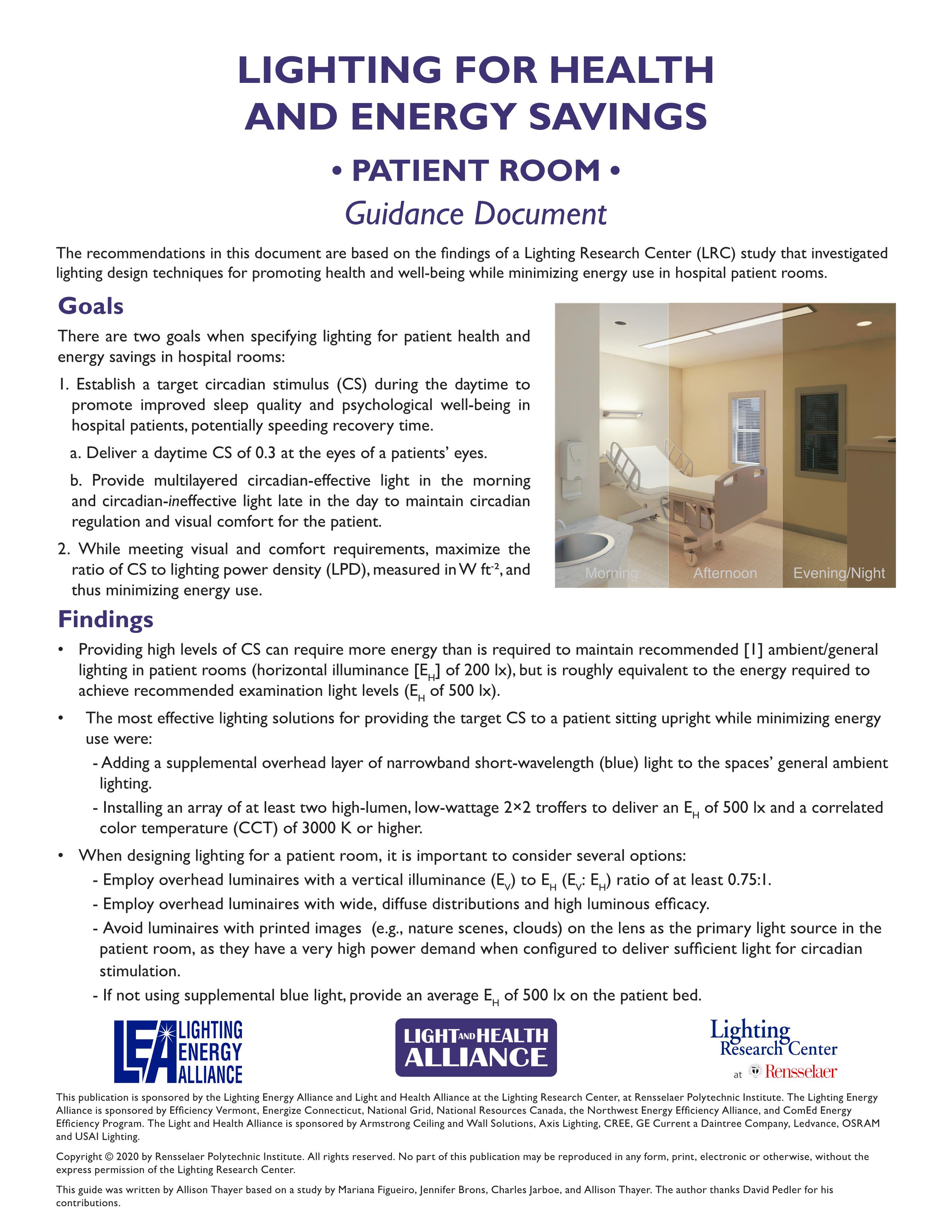
Guide for Parking Lot Lighting
Exterior lighting in parking lots should support the visibility of hazards so that drivers and pedestrians can safely move through them. Parking lot lighting should also reinforce perceptions of safety so that people are not afraid to use the space at night. With improved
uniformity, much lower average illuminances can be provided while
achieving equivalent (or improved) perceived safety and brightness.
Lighting for Health and Energy Savings
Recent research has shown that electric lighting can be used to promote alertness and improve people’s health and wellbeing by entraining their circadian rhythms to the natural 24-hour light-dark cycle. Unfortunately, providing the circadian stimulus needed by building occupants can increase energy use. This short guidance document helps specifiers design lighting systems to improve occupant health while minimizing the impact on energy use. This project was sponsored by Natural Resources Canada, the LRC's Light & Health Alliance, and the LRC's Lighting Energy Alliance.
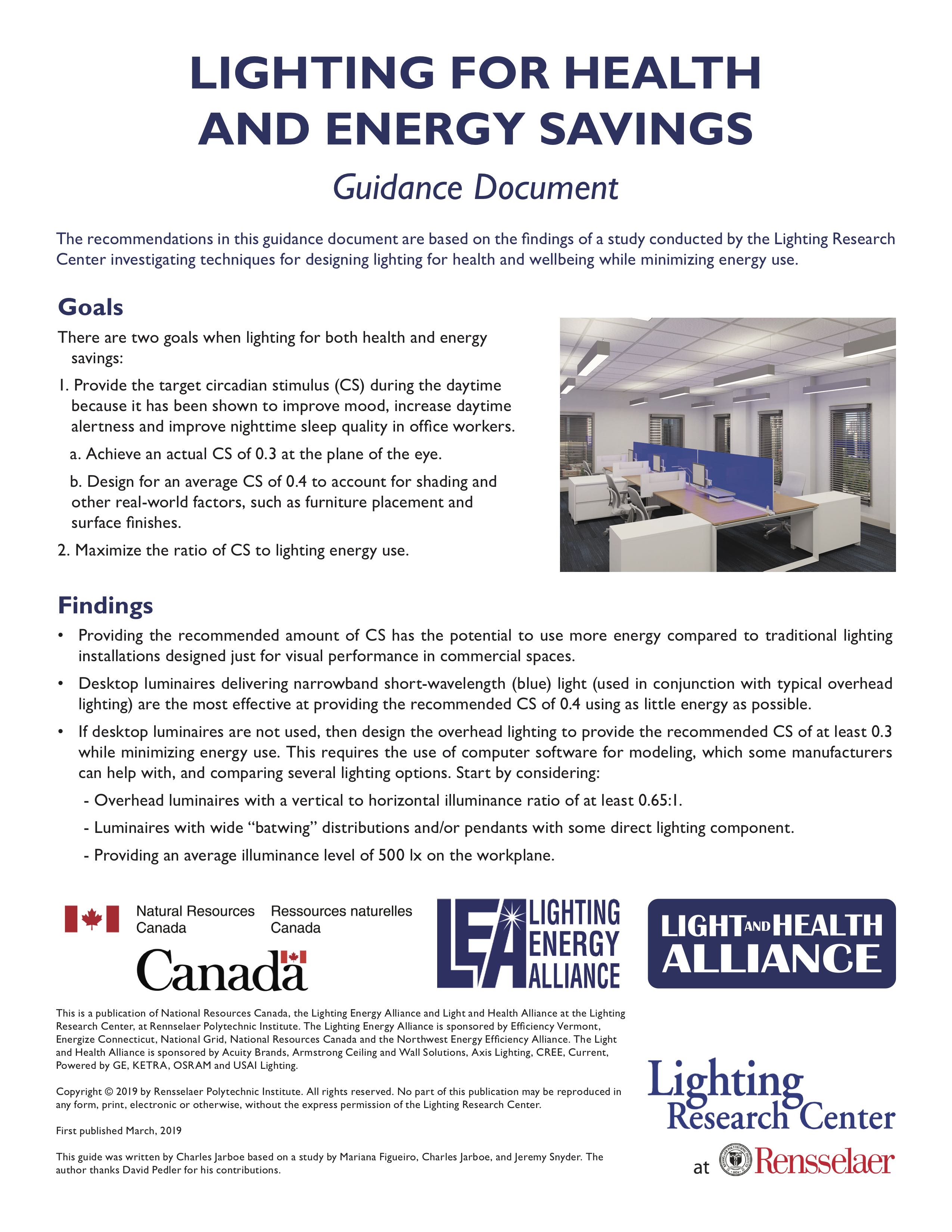
Residential Lighting Video Series
The LRC has produced a series of brief videos that guide builders, contractors, and homeowners in providing energy efficient, high quality lighting in residences. The video series, produced in 2015, provides an accessible overview of a number of topics important to residential lighting, including an overview of efficient lighting; cautions when upgrading lighting; light bulbs and fixtures; upgrading incandescent bulbs; economic calculations; and lighting tips for kitchens, living rooms, bedrooms, home offices, and bathrooms. The videos complement the LRC’s Lighting Patterns for Homes website, and viewers are guided to the most relevant portion of that website.

Case Studies of Energy-efficient Lighting
Case studies of efficient lighting from the Demonstration and Evaluation of Lighting Technologies and Applications (DELTA) program, including residential, commerical, industrial, and outdoor sites.
Daylight Dividends
Daylight Dividends is a multi-year joint research program facilitating the widespread implementation of daylight in buildings. The "dividends" include human comfort and performance and energy savings. Daylight Dividends is run by the Lighting Research Center on behalf of the project sponsors. The program began in 2003 and continues today to provide resources to building professionals.
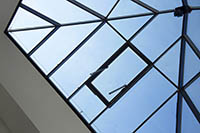
Patterns to Daylight Schools
This publication presents model designs for implementing daylighting into school classrooms, corridors, and gymnasiums. With emphasis on human health impact and other daylight metrics, this book compares cost, comfort, visual environment, and energy use among well-known daylighting techniques. Conceptual daylight approaches are offered for the three most common spaces in schools: classrooms, corridors, and gymnasiums. The designs and technical analyses are distilled to visual presentations for architects and school administrators. A “daylighting dashboard” is introduced, a graphic method to quickly compare the patterns.
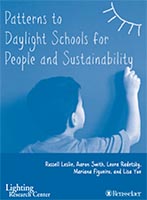
Outdoor Lighting Pattern Book
This hardcover book, published in 1996, presents many lighting possibilties for typical outdoor residential, commercial, institutional, industrial, and public spaces, including walkways and areas adjoining apartment houses, alleys, quick-stop shopping, pedestrian malls, city business districts, office parks, parking garages, loading docks, school yards, playgrounds, public parks, and waterfront walks. The lighting suggestions are provided through a series of "patterns" or model lighting designs. Although the lighting technology has advanced since the book's publication, the lighting designs themselves remain relevant. The book has been used as the basis for waterfront renovations in older urban areas, and won an International Award of Achievement from the Society for Technical Communication.
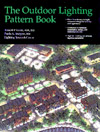
Mesopic Street Lighting
The LRC developed the unified photometry system, which determines equivalent visual performance levels under photopic and mesopic light levels. This report describes a case study of energy savings achieved by designing streetlighting with the unified photometry system.
